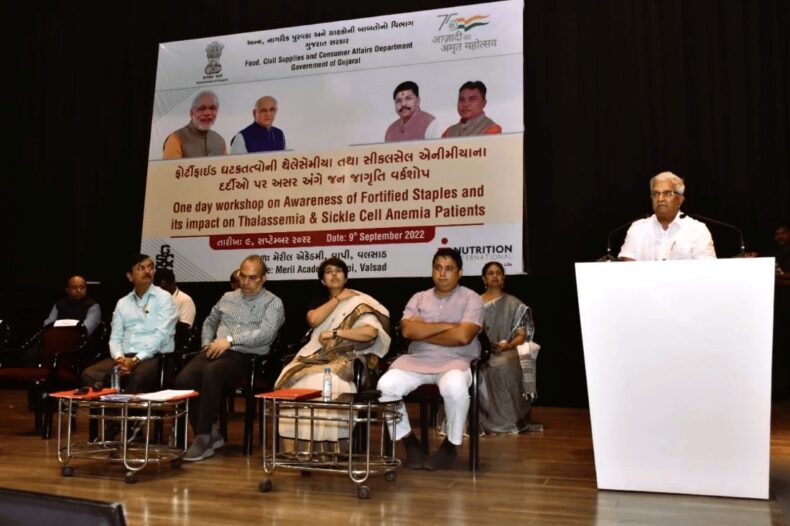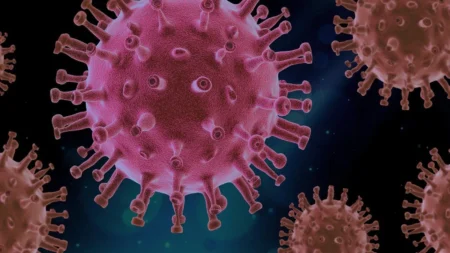Fortification of rice has been recognized as a method for boosting dietary intake of vitamins and minerals with a quick turnaround time (TAT) and fighting against anemia and malnutrition.
To popularise and raise awareness about the benefits of fortified rice, particularly in the country’s tribal areas, the Department of Food and Public Distribution (DFPD) and the governments of Gujarat, Rajasthan, Madhya Pradesh, Maharashtra, Chhattisgarh, Jharkhand, Telangana, and Kerala organized workshops and seminars in tribal areas and districts with population that is susceptible to Thalassemia and Sickle Cell Anaemia.

The Government of Gujarat State hosted a workshop at Meril Academy in the Vapi district on September 9, 2022. Following this, workshops were also held in different cities in association with DFPD, Development Partners, and FCI, where many ministers, officials, leaders, and experts from various states attended the program. Presentations were made by experts on fortified staples and their effects on hemoglobinopathies.
Following the presentations, panel discussions, and Q&A sessions with technical experts, the D/o Food & PD, and FCI officials were organized. The experts emphasized the benefits of consuming fortified rice for the general public and addressed the people’s and local media’s concerns and reservations.
in the process of fortification, Fortified Rice Kernels (FRKs) containing FSSAI-prescribed micronutrients (Iron, Folic Acid, Vitamin B12) are combined with regular rice in a 1:100 ratio. Considering the aroma, taste, and texture, fortified rice is closely identical to traditional rice. The process is carried out in rice mills during the milling of rice.
The rice fortification ecosystem has been significantly improved to meet the target requirements by bringing on industries, board rice millers, FRK manufacturers, and other stakeholders. There are more than 9000 rice mills in the country with a blending infrastructure installed for the production of fortified rice, with a total of around 60 LMT monthly production capacity, which has increased over four times since last year.
The Rice fortification strategy is used in many countries around the world and has been recognized as a cost-effective and complementary strategy to increase vitamin and mineral content in diets with a short turnaround time (TAT). It is also a step toward nutritional security and aid in the fight against anemia and malnutrition in the country.
Read More: 8 worst food ingredients for immune system













